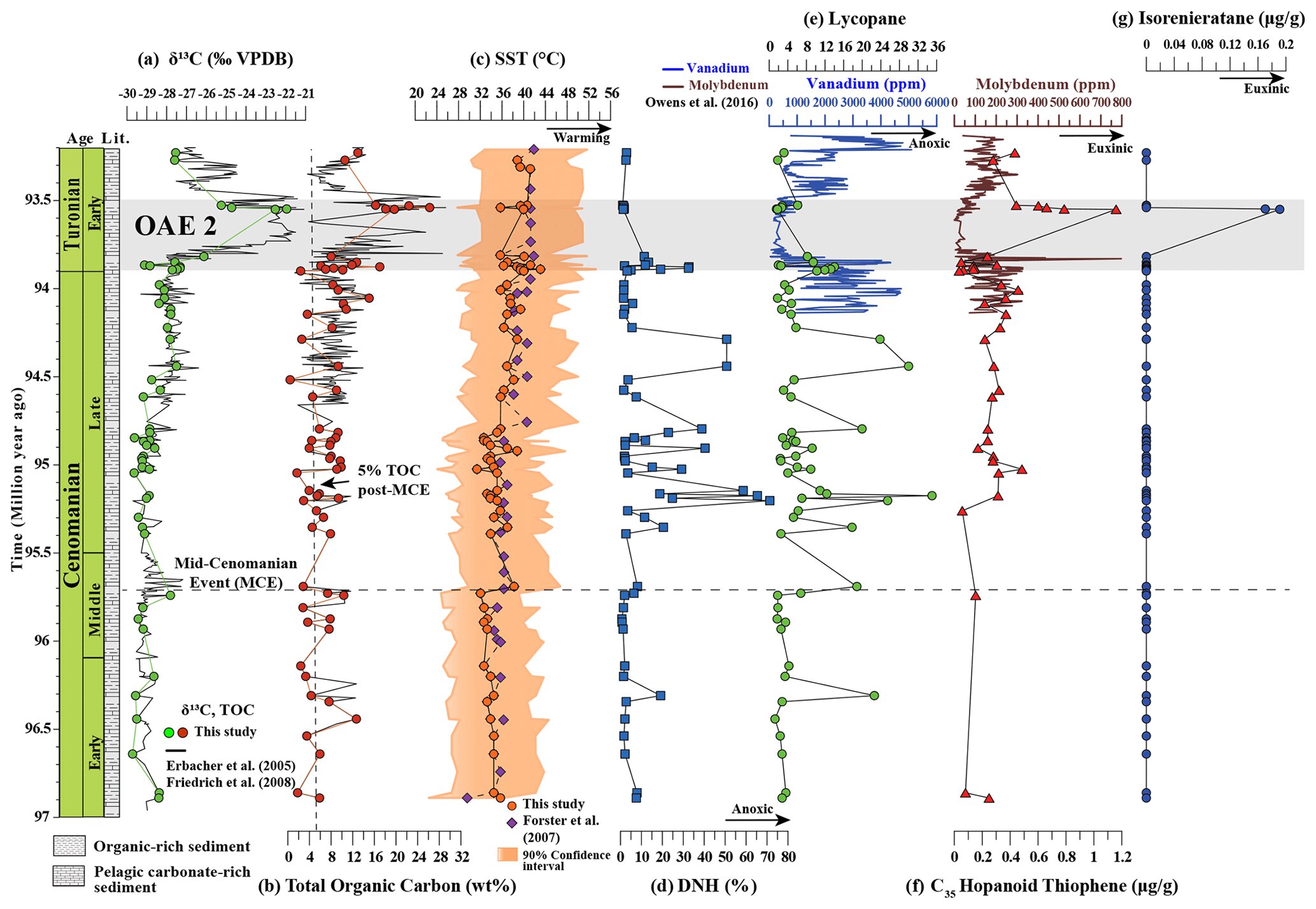
Anoxia: Understanding Oceanic Anoxia and Its Global Impact

Oceanic anoxia is an increasingly significant environmental issue that threatens marine life and ecosystems worldwide. Defined as the lack of dissolved oxygen in ocean waters, anoxia can lead to dramatic changes in the makeup and functionality of marine environments. This phenomenon has profound implications for biodiversity, fisheries, and biogeochemical processes, making it essential to understand the causes and impacts of oceanic anoxia as it continues to evolve in a changing climate.
The importance of analyzing oceanic anoxia becomes even more evident when considering the historical evidence found in marine shales. These geological records have shown that periods of anoxia have occurred throughout Earth’s history, often aligned with significant climatic and geological events. As modern-day oceanic conditions fluctuate due to climate change and human activity, there is an urgent need to address the intricate interactions between nutrient runoff, ocean circulation, and the resulting impacts on marine ecosystems.
What is Oceanic Anoxia?
Oceanic anoxia refers to a state where dissolved oxygen levels in ocean waters fall to critically low levels, often resulting in significant shifts in marine biodiversity. While ocean environments typically maintain a balance of oxygen through biological respiration and atmospheric exchange, occasions arise where this balance is disrupted. In these instances, areas of the ocean can become hypoxic—lacking adequate oxygen—and ultimately lead to full anoxic conditions.
The Mechanisms Behind Anoxia
Understanding the mechanisms driving oceanic anoxia is crucial for recognizing its potential threats. One major cause is the stratification of ocean layers, which can occur due to changes in temperature and salinity. When surface waters warm and create a barrier to deeper waters, it prevents oxygen from reaching deeper marine layers. Furthermore, human-induced nutrient loading—often from agricultural runoff—can lead to excessive algal blooms. When these algae die and decompose, they consume large volumes of oxygen, reinforcing the cycle of anoxia.
Causes of Oceanic Anoxia
Several factors contribute to the onset of oceanic anoxia. The primary causes include:
- Nutrient Pollution: Excess nutrients like nitrogen and phosphorus from agricultural runoff lead to algal blooms. When these blooms die off, their decomposition depletes oxygen from the water.
- Climate Change: Changes in temperature can alter oceanic circulation patterns, impacting the distribution of oxygen-rich waters.
- Geological Activity: Events such as volcanic eruptions can release nutrients and other compounds into the ocean, contributing to anoxic conditions.
Historical Evidence of Anoxia in Marine Shales
Records found in marine shales offer compelling historical evidence of oceanic anoxia. Studies of these sedimentary deposits indicate that many periods in Earth’s history, including mass extinctions, correlate with widespread anoxic conditions. For instance, the Late Devonian and the end-Permian extinctions are associated with significant disruptions in oxygen levels.
Analyzing Marine Shales
Researchers analyze isotopic compositions and fossilized remains in shales to reconstruct ancient marine environments. These analyses provide insights into the conditions that favored anoxic settings and underscore how similar situations could emerge today due to anthropogenic influences.
Impacts on Marine Ecosystems
The impacts of oceanic anoxia on marine ecosystems are profound. Many marine organisms rely heavily on dissolved oxygen for survival; therefore, drops in oxygen levels can lead to significant declines in biodiversity. Anoxic environments often lead to the loss of fish populations, which in turn devastate fishing industries and economies dependent on seafood.
Effects on Bottom-Dwelling Organisms
Bottom-dwelling organisms, or benthic species, are particularly vulnerable to oceanic anoxia. Many of these creatures, including various fish, mollusks, and crustaceans, require sufficient oxygen levels found in the sediment and surrounding water. When anoxic conditions arise, these organisms cannot survive, leading to significant shifts in the food web and ecosystem dynamics.
The Role of Oceanic Circulation
Oceanic circulation plays a critical role in the distribution of oxygen throughout marine environments. Currents like the thermohaline circulation are responsible for transporting oxygen-rich water to deeper ocean layers. However, factors such as warming temperatures and increased freshwater influx can disrupt these currents, exacerbating the conditions leading to oceanic anoxia.
Disruption of Circulation Patterns
When oceanic circulation is disrupted, it can result in stagnant water masses that become oxygen-depleted. This stagnation not only impacts marine life directly but also affects nutrient cycling within the ocean. Such interruptions can have cascading effects on global ecosystems.
Global Implications of Anoxia
The implications of oceanic anoxia extend beyond local marine ecosystems to global biogeochemical cycles. Oxygen is a critical component of nutrient cycles, and widespread anoxia can alter the availability of nutrients such as carbon and nitrogen, affecting both marine and terrestrial ecosystems.
Impact on Climate Regulation
Marine systems play a vital role in regulating Earth’s climate. As oceanic anoxia affects phytoplankton populations—critical agents in carbon sequestration—the implications for global carbon cycles become alarming. Disruptions in these processes could further accelerate climate change, creating a feedback loop that exacerbates the initial conditions of anoxia.
Future Predictions and Climate Change
Looking ahead, climate change models suggest that oceanic anoxia could become an even more prevalent issue due to increasing global temperatures and altered precipitation patterns. Predictions indicate that coastal waters might experience more frequent and severe hypoxic and anoxic events.
Potential Consequences for Fisheries
As fish populations decline due to anoxic conditions, commercial fisheries are also likely to suffer. Regions that are heavily reliant on these fisheries for both sustenance and economic activity could face substantial challenges. This issue highlights the importance of sustainable fisheries management as a key component of adaptation strategies.
Mitigation and Adaptation Strategies
To address the challenges posed by oceanic anoxia, comprehensive mitigation and adaptation strategies must be developed. These strategies could include:
- Reducing Nutrient Inputs: Implementing better agricultural practices to minimize runoff and nutrient leaching into coastal waters.
- Monitoring Programs: Establishing frequent monitoring of coastal water quality to detect early signs of anoxia.
- Restoration Efforts: Focusing on the restoration of coastal ecosystems such as wetlands that can help filter excess nutrients.
Conclusion
oceanic anoxia poses a serious threat to marine ecosystems, fisheries, and global biodiversity. Understanding the causes, historical context, and implications of anoxia is crucial for developing effective mitigation strategies. It is vital for policymakers, scientists, and the global community to collaborate on solutions to combat this emerging crisis. As we seek to protect our oceans, recognizing the relationship between human activities and oceanic anoxia will be essential to ensuring a sustainable future for marine life and the communities that rely on it.
Did you find this article helpful? Anoxia: Understanding Oceanic Anoxia and Its Global Impact See more here Education.
Leave a Reply






Related posts